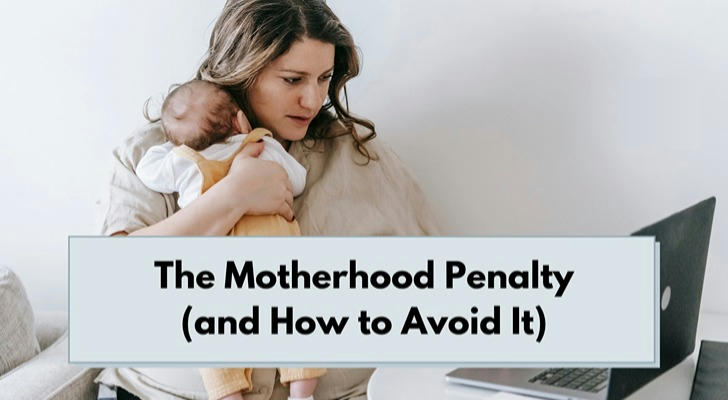Navigating the 'Motherhood Penalty': Challenges and Strategies for Working Mothers
In contemporary society, the term "motherhood penalty" refers to the systematic disadvantages that working mothers often encounter in their professional lives following childbirth. These challenges encompass reduced earnings, limited career advancement opportunities, and pervasive workplace biases. Understanding the multifaceted nature of the motherhood penalty is crucial for promoting gender equality and supporting women's career aspirations.

Understanding the Motherhood Penalty
The motherhood penalty manifests in various forms, significantly impacting women's professional trajectories:
Wage Disparities
Research indicates that employed mothers often experience wage penalties. For instance, a 2014 study by the U.S. Joint Economic Committee found that mothers earned 3% less than childless women and 15% less than childless men. This wage gap is a significant contributor to the broader gender wage disparity observed in many industries.
A study by University College London revealed that millennial women in their early thirties earn 9% less per hour than their male counterparts in the same jobs with similar education levels. This pay gap increases to 16% for mothers, while men's wages remain unaffected by fatherhood.

Hiring and Promotion Biases
Mothers may also face biases in hiring and promotion processes. A 2019 study conducted in Germany found that women with children are discriminated against in the job market, whereas men with children are not. This bias limits mothers' career advancement opportunities.
Experimental studies have demonstrated that equally qualified mothers are less likely to be hired compared to non-mothers. For example, one experiment revealed that participants recommended hiring 84% of non-mothers, whereas only 47% of mothers received similar recommendations. Additionally, non-mothers were offered higher starting salaries than mothers, highlighting a systemic bias against women with children.
Employment Gaps
Mothers often experience employment gaps due to childbirth and childcare responsibilities, leading to perceptions of reduced commitment or outdated skills. These gaps can hinder career progression and result in long-term financial implications.
Factors Contributing to the Motherhood Penalty
Several interrelated factors contribute to the persistence of the motherhood penalty:
Societal Expectations and Gender Roles
Traditional gender roles often position women as primary caregivers, leading to assumptions that mothers are less dedicated to their careers. These stereotypes can result in fewer opportunities and biased performance evaluations.
In Australia, women continue to perform 50% more housework than men, creating significant resentment and stress. A recent survey shows that as of 2022, men spent an average of 12.8 hours per week on housework, unchanged from 20 years earlier, while women spent an average of 18.4 hours.

Workplace Policies
Many organizations lack supportive policies for working mothers, such as flexible hours, remote work options, or adequate parental leave. The absence of these policies makes balancing work and family responsibilities challenging, leading to career interruptions or reduced work hours.
The high cost of childcare and tax policies also influence the prioritization of one parent's career, generally disadvantaging women. Data from a 2024 study shows mothers are considerably less likely to be employed a decade after their first child in most economies.
Cultural Norms
Cultural attitudes towards motherhood and work vary across societies. In some cultures, there's an expectation that mothers should prioritize family over career, leading to workplace discrimination.
Real-Life Implications
The motherhood penalty has tangible effects on women's careers and personal lives. For example, a recent article highlighted that despite young women excelling in education and early career stages in developed economies, the arrival of a baby significantly impacts careers predominantly for women, creating a "motherhood penalty".
Another case involved Australian women doing 50% more housework than men, creating 'volcanic levels of resentment'.
Addressing the Motherhood Penalty
To mitigate the motherhood penalty, several strategies can be implemented at both organizational and societal levels:
Implement Supportive Workplace Policies
Organizations can adopt policies that support working mothers, such as flexible working hours, remote work options, and comprehensive parental leave. These policies help mothers balance their professional and personal responsibilities more effectively.
Policymakers and companies are addressing these challenges through initiatives like promoting flexible work arrangements, improving mentorship, and providing fertility support. This shift toward family-friendly workplace policies aims at creating a more equitable professional landscape for working mothers.

Challenge Stereotypes
Addressing and confronting biases that question a mother's dedication and availability is essential. Engaging in open dialogues about the capabilities and commitments of working mothers can help shift societal perceptions and reduce discrimination.
Efforts to delegate housework and redefine norms are imperative to lessen the burden on women.
Promote Shared Parental Responsibilities
Encouraging shared parental responsibilities can alleviate pressures on mothers and promote gender equality in both the workplace and home. Policies supporting paternity leave and flexible working arrangements for all parents contribute to this shift.
The UK's proposed workers' bill aims to strengthen rights for pregnant women, but concerns have been raised about potential discrimination against mothers and reinforcing the "motherhood penalty." Advocates are calling for reforms in parental leave policies to support families better.
